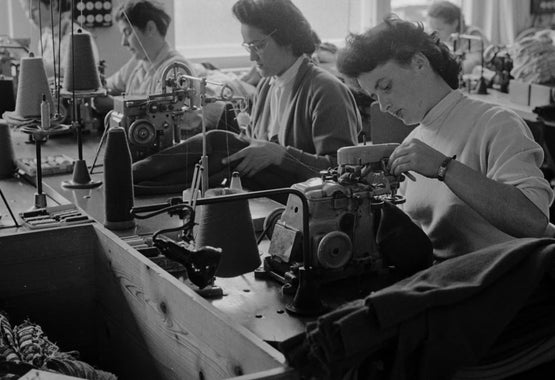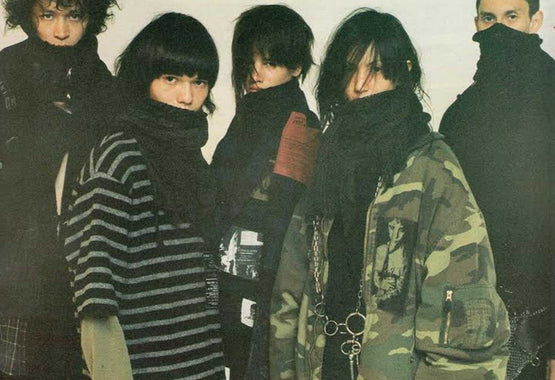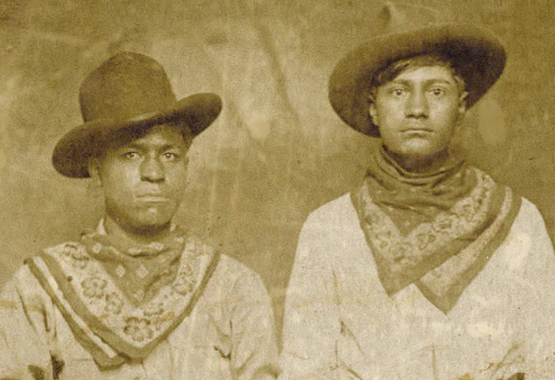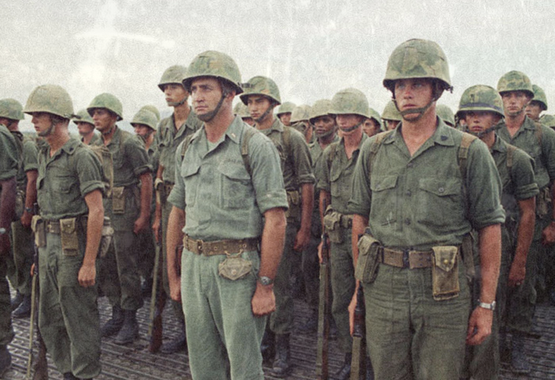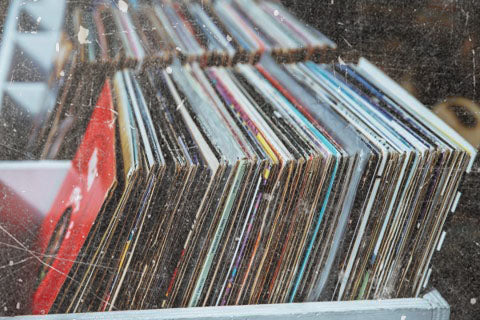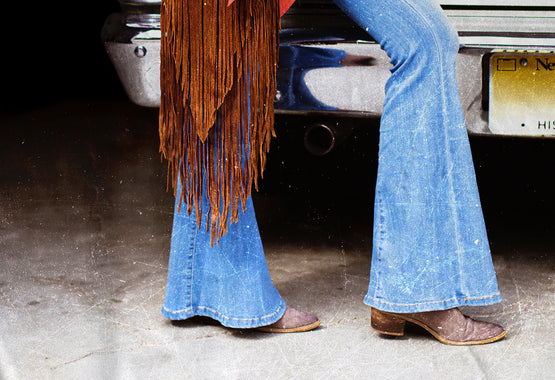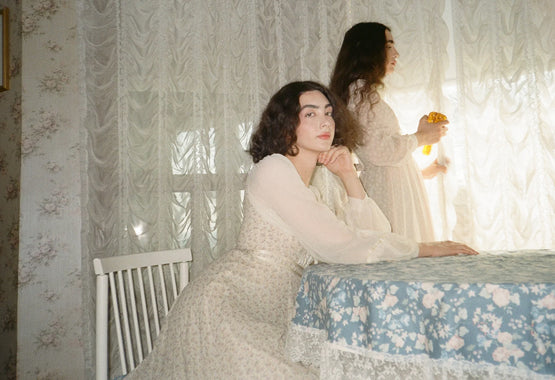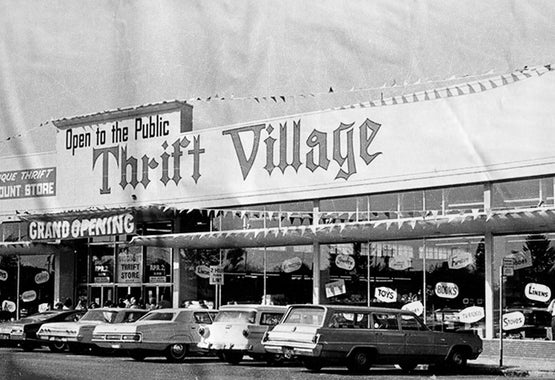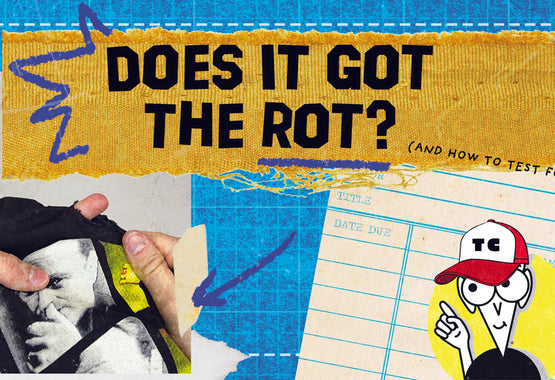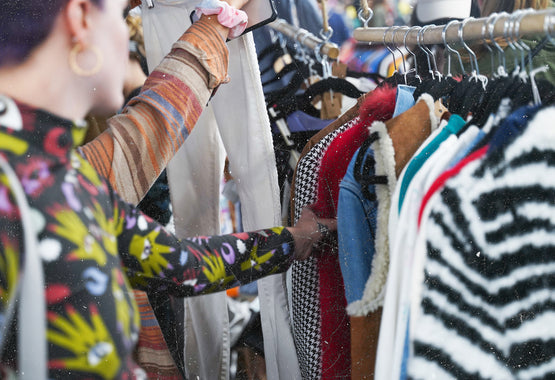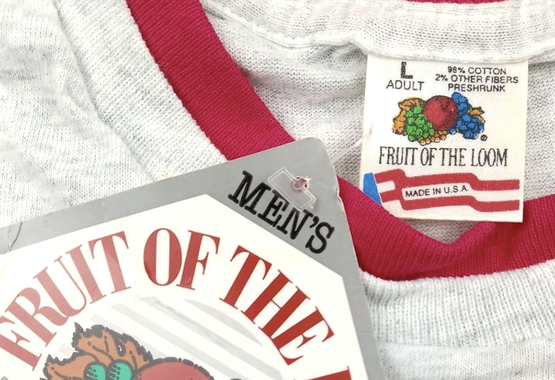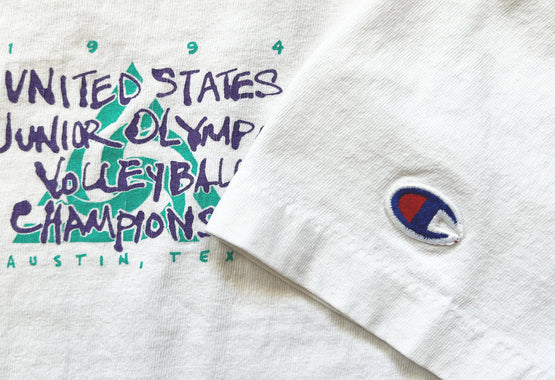A Paisley Past: The History of the Bandana and How to Tell if Yours is Vintage
written by Thomas Starr
Truly one of the most iconic, as well as versatile, pieces of clothing ever invented, the bandana, in addition to its paisley print, has become a cultural symbol throughout the world. Having been worn for hundreds of years, the bandana has seen itself front and center at countless historical events, from the Revolutionary War to the Stonewall Uprising and beyond. Over this time, the bandana itself has seen numerous changes as well, from its fabric and pattern to use and style of wear. As such, it's quite easy to find vintage bandanas while shopping at thrift, vintage, and even antique stores, each with their own distinct characteristics. Thankfully, this rich history of change makes the bandana one of the easier pieces of clothing to figure out the age of, with many different qualities giving clues as to the approximate age of the piece of patterned cloth. ThriftCon U. is here to clue you into these details, as well as teach you a little bit about the history behind the bandana, so you can become an expert on all things paisley.

The word bandana itself comes from the Hindi word bandhani, which itself comes from the Sanskrit word bandh, meaning to tie. Bandhani is a type of tie-dye which originated in the Indus Valley Civilization over 5000 years ago. The process involves tying cloth with very fine thread in order to produce intricate patterns of dots. The paisley pattern commonly seen on bandanas also originates from Asia, coming from the Persian boteh, a curved almond-like symbol which spread throughout the Persian empire. The boteh was frequently used on bandhani shawls and kerchiefs from the Kashmir region, which quickly spread to Europe during the colonization of India.

By the 1800s, production of bandhani inspired kerchiefs had begun in Europe, specifically in France and the UK. In fact, boteh patterns came to be known as paisley in the west due to Paisley, Scotland being a major kerchief manufacturing hub. Yet the Europeans didn’t use the ancient method of bandhani to dye kerchiefs, due to the incredible labor-intensiveness of the artform. Instead, a dying process known as Turkey red was utilized to more efficiently produce bright red bandanas. Turkey red got its color from the root of the madder plant, yet also involved submerging the fabric in lye, sheep’s dung, blood, and olive oil to achieve the desired outcome. Turkey red dying became incredibly popular and successful in Scotland, contributing to the nation’s status as a top producer of early bandanas.
Naturally, the bandana would spread from Europe to the Americas in the 1700s, where colonists used bandanas printed with maps to navigate the New World. During the Revolutionary War, Martha Washington herself would commission a now famous bandana featuring the likeness of her husband, George; dedicating him as the founder and protector of America’s liberty. This would help popularize the bandana in America, setting the stage for its explosion in popularity during the 19th century. During this time, bandanas would become synonymous with the hard-working lifestyles of American sailors, cowboys, and laborers. Used to protect one’s lungs, keep one’s hair up, or even blow one’s nose, the bandana was a useful tool in the everyday life of many American workers. In fact, the term redneck is thought to originate from the red bandanas worn by striking coal miners at the West Virginia Coal Mining March of 1921. This popularity with workers continued into tWW2, with the bandana being famously worn by Rosie the Riveter, catapulting itself into Americana. Politicians would even use the bandana to campaign, printing their slogans and likeness on the handkerchiefs, much like the famous George Washington bandana.


The bandana’s association with the working class would lead to it becoming a symbol of counterculture in the later 20th century, becoming popular with bikers, gangs, and even the LGBT community. Around 1970, the “hanky code” was created to represent one’s sexual preferences in the gay community, with color and side of wear being used to designate kinks. In the 1980s, bandanas would once again take on a new meaning, with red and blue bandanas becoming associated with the Bloods and Crips respectively.

Today, the bandana remains a symbol of Americana and rebellion, being worn by countless people to mean countless different things. The paisley print has spread beyond the handkerchief to adorn nearly every piece of clothing possible, featuring on everything from DIY projects to high fashion mainlines. Nearly everyone has worn a bandana at some point in their life, making it a truly universal piece of clothing.

But as us vintage-enthusiasts know, not all bandanas are created equal. Instead, rare old bandanas can fetch hundreds of dollars online, while new bandanas retail for less than a dollar. So how do you tell just how old your bandana is? Well, there’s a few different ways, beginning with the WPL or RN number printed on bandanas made after 1941. The Wool Product Labeling Act (WPL) of 1939 went into effect that year, requiring all bandanas made to have a five-digit number, along with a WPL prefix, printed on them, ranging from 00101 to 13699. The WPL numbers would last until 1952, when they were replaced by RN numbers. RN numbers would run from 00101 to 04086 until 1959, after which RN numbers would reset, beginning now with 13670. Each of these numbers corresponds to a particular brand, with Paris Accessories being RN 13960, a very commonly seen number on vintage bandanas. As such, these numbers can be used to tell the approximate age of your bandana. For example, if you have a bandana labeled RN 02087, you know that it’s from between 1952 and 1959. Additionally, that means if you have a bandana without an RN or WPL number, you know it’s from before 1941.

One can also look to the other words and designs printed on the bandana to uncover its age. The words fast color or colorfast are signs of a vintage bandana, as they were used in the mid 20th century to advertise the fact that said bandanas would not lose their color in the sun or wash. Near these words one may also find a small elephant printed, indicating that the bandana was made by the heavily desirable “Elephant Brand.” Check the trunk of the elephant, if it’s pointed down then that means the bandana is likely from before 1950. Furthermore, one should check where the bandana was made, as bandanas printed with Made in USA were made between the 1970s and 1990s. Should the bandana lack a country of origin printing, you can bet that it’s from the 1960s or earlier.

Finally, the hem of the bandana can give an approximation of its age. If the hem is double selvedge, meaning that the hem was created by the loom itself and not sewn into place, then it is likely older than the 1950s, as wider looms allowed for multiple bandanas to printed on one sheet of fabric, resulting in edges that had to be cut and sewn. Folded hem bandanas are also likely older than overcast hem bandanas, yet this isn’t always the case.
Vintage bandanas have become collectors items over the past few years as vintage clothing in general has become more popular. This is rightfully so, as bandanas are one of the most historic pieces of clothing ever invented and are downright American icons. So the next time you see a bandana in the thrift store, think twice about passing it over, it just might be a piece of history.

